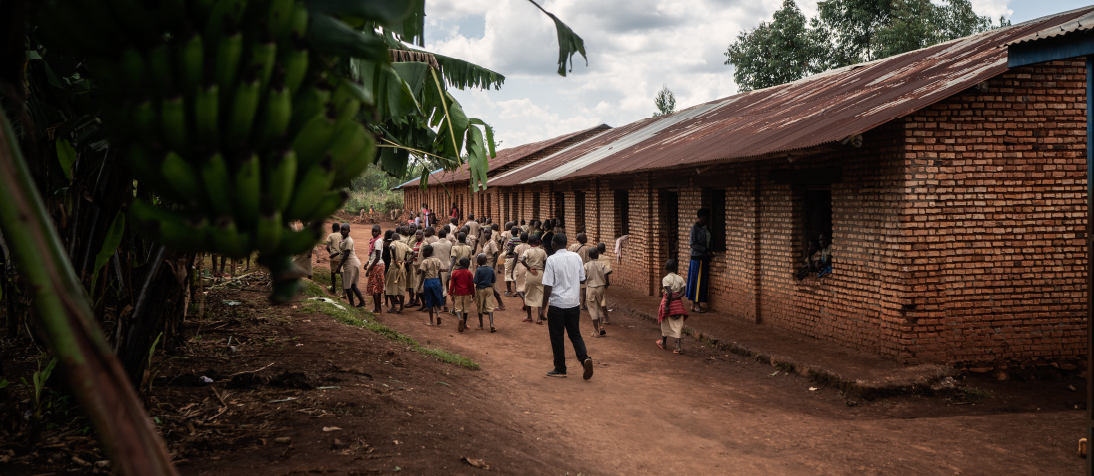 Burundi. Children return to their classes after lunch. Photo: World Food Programme
Burundi. Children return to their classes after lunch. Photo: World Food Programme
This blog is co-published with the World Food Programme.
In early 2021, the World Food Programme’s Impact Evaluation Unit teamed up with WFP’s School-Based Programme division and the World Bank’s Development Impact Evaluation (DIME) department to launch the School-Based Programmes Impact Evaluation Window. Its objective is to contribute to the broad-based evidence base for the efficacy of school-based programs while simultaneously supporting local evidence needs. Through creating the knowledge agenda for this window and engaging with many country teams, we learned four key lessons:
1. There are many unanswered questions
To identify evidence priorities, we conducted an extensive literature review and consulted with multiple stakeholders. The literature tells us that school feeding interventions increase children’s school enrolment, but many nuances require further analysis. For example, the optimal balance between cost, size, frequency, and meals’ composition ; the most effective bundle of complementary interventions to improve learning, health, and nutrition; effects on girl’s well-being, intra-household allocations, and whether sourcing and preparing food locally has additional benefits for communities. We identified four understudied areas through consultations:
- The impact of different interventions on children’s nutrition, health, education, and learning
- The impact on girls’ well-being, specifically
- The impact of different school feeding procurement systems on local economies
- Impacts on household consumption and food security in the presence of shocks
Four countries were selected to kick-off the window: Burundi, Guatemala, Jordan, and The Gambia.
2. Assessing the overall impact of school feeding is challenging because few programs are new or expanding to new schools
Among the four countries, only The Gambia has a program anticipated to expand to new schools.
3. Comparing different procurement modalities is critically important
Many of the school feeding programs we have engaged with since 2021 are planning to pilot new procurement modalities for their school feeding programs. For example, Jordan and Burundi are shifting from centralized procurement and delivery systems to modalities that seek to engage local communities and workers. The rationale is to develop local markets and positively impact local cooperatives, farmers, and workers. We will work with teams in these countries to assess impacts on both service delivery (for example, does local procurement allow for more diverse fresh meals that are better suited to local taste?), and the local economy.
Even in countries with a history of Home-Grown School Feeding (HGSF) modalities, governments are working to improve links between farmers and institutional markets to boost impacts on the local economy.
- In Guatemala, the government requires 50 percent of school meals to be procured locally, but, in practice, many schools struggle to meet this target due to a combination of factors like transaction costs of searching and dealing with many small suppliers. The country team will pilot the School Feeding Management App, which aims to facilitate linkages between schools and farmers. As part of the pilot, we will study whether this leads to more transactions and more transparent prices.
4. Start small and grow over time
Countries where such procurement modalities are new use a phased approach to assessing impacts.
- In Guatemala and Burundi, the new modalities will start at a small scale to build implementation capacity. The pilots or lean impact evaluations will also provide time to build monitoring systems that can provide adaptive evidence to inform the programs as they mature. If pilots improve service delivery and impacts can be expected further down the Theory of Change, large-scale impact evaluations will be included in the scale-up of the programs. Another benefit of starting small is that further experimentation can be used to test strategies to overcome unexpected challenges during the pilots.
Moving forward
We are looking for opportunities to support programs focused on generating rigorous evidence to enhance their impact. Please get in touch if you are working on school-based programs and are planning a new program, expanding an existing one, or changing procurement modality. We would be happy to discuss the feasibility of inclusion into the Window.






Join the Conversation